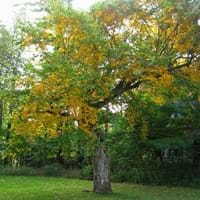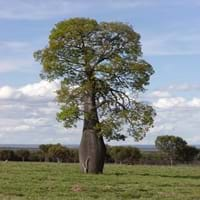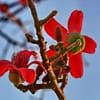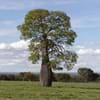Life Span
Perennial
Biennial
Origin
Northeastern United States, Mid-Atlantic United States, North-Central United States, Central United States, Canada
Australia
Types
it is a type of birch
Narrowleaf Bottle Tree, Pink Flame Tree, Rusty Kurrajong
Number of Varieties
Not Available
Habitat
Hillside, Mountain tops
Subtropical climates, Subtropical forests
USDA Hardiness Zone
4-7
9-11
Sunset Zone
A3, 1a, 1b, 2a, 2b, 3a, 3b, 4, 5, 6, 7, 14, 15, 16
H1, H2, 15, 16, 17, 18, 19, 20, 21, 22, 23, 24
Habit
Pyramidal
Upright/Erect
Flower Color
Light Yellow, Light Green
Crimson, Orange Red
Flower Color Modifier
Bicolor
Bicolor
Fruit Color
Bronze, Sandy Brown
Dark Red, Sienna, Chocolate
Leaf Color in Spring
Green, Dark Green
Not Available
Leaf Color in Summer
Dark Green
Red, Green, Light Green
Leaf Color in Fall
Yellow
Green
Leaf Color in Winter
Not Available
Green
Plant Season
Spring, Summer, Fall, Winter
Spring, Summer
Sunlight
Full Sun, Partial Sun
Full Sun, Partial Sun
Type of Soil
Clay, Loam
Loam, Sand
The pH of Soil
Acidic, Neutral
Acidic, Neutral
Soil Drainage
Average
Well drained
Bloom Time
Early Spring
Early Spring, Spring, Late Spring, Early Summer
Tolerances
Not Available
Pollution, Drought
Where to Plant?
Ground
Ground
How to Plant?
Seedlings
Grafting, Seedlings
Plant Maintenance
Medium
Medium
Watering Requirements
Average Water Needs, Do Not over Water
Average Water Needs, Do Not over Water, Requires regular watering
In Summer
Lots of watering
Lots of watering
In Spring
Moderate
Moderate
In Winter
Average Water
Average Water
Soil pH
Acidic, Neutral
Acidic, Neutral
Soil Type
Clay, Loam
Loam, Sand
Soil Drainage Capacity
Average
Well drained
Sun Exposure
Full Sun, Partial Sun
Full Sun, Partial Sun
Pruning
Prune to half of its height
Remove branches, Remove damaged leaves, Remove dead branches, Remove dead leaves, Remove dead or diseased plant parts, Remove deadheads
Fertilizers
All-Purpose Liquid Fertilizer, fertilize twice a year
Nitrogen
Pests and Diseases
Borers, Chlorosis
Red blotch
Plant Tolerance
Not Available
Drought, Pollution
Flowers
Insignificant
Showy
Flower Petal Number
Not Available
Single
Fragrant Bark/Stem
Yes
No
Foliage Texture
Medium
Medium
Foliage Sheen
Matte
Glossy
Attracts
Not Available
Hummingbirds
Allergy
Respiratory problems, Skin rash
allergic reaction, Skin irritation
Aesthetic Uses
Landscape Designing, Showy Purposes
Showy Purposes
Beauty Benefits
Not Available
Not Available
Environmental Uses
Air purification, Shelter for wildlife
Air purification, Nesting sites for birds, Shadow Tree, Wildlife
Medicinal Uses
No Medicinal Use
Not Available
Part of Plant Used
Bark, Sap
Root, Seeds
Other Uses
Edible syrup, used for making charcoal, Used for making wood alcohol, Used in Furniture
Used as Ornamental plant
Used As Indoor Plant
No
No
Used As Outdoor Plant
Yes
Yes
Garden Design
Feature Plant, Shade Trees
Feature Plant, Shade Trees, Street Trees, Tropical
Botanical Name
BETULA alleghaniensis
BRACHYCHITON rupestris
Common Name
Yellow Birch
Australian Flame Tree, Flame Bottle Tree, Illawarra Flame Tree
In Hindi
Yellow Birch
बोतल ट्री
In German
Yellow Birch
Flaschenbaum
In French
bouleau jaune
Bouteille Arbre
In Spanish
Abedul amarillo
Árbol de la botella
In Greek
κίτρινο Birch
Μπουκάλι Δέντρο
In Portuguese
κίτρινο Birch
Bottle Tree
In Polish
żółte brzozy
Butelka Drzewo
In Latin
Birch flavum
Utrem ligno
Phylum
Magnoliophyta
Magnoliophyta
Class
Magnoliopsida
Magnoliopsida
Family
Betulaceae
Sterculiaceae
Genus
Betula
brachychiton
Clade
Not Available
Angiosperms, Eudicots, Rosids
Tribe
Not Available
Sterculieae
Subfamily
Not Available
Sterculioideae
Number of Species
Not Available
Season and Care of Yellow Birch and Bottle Tree
Season and care of Yellow Birch and Bottle Tree is important to know. While considering everything about Yellow Birch and Bottle Tree Care, growing season is an essential factor. Yellow Birch season is Spring, Summer, Fall and Winter and Bottle Tree season is Spring, Summer, Fall and Winter. The type of soil for Yellow Birch is Clay, Loam and for Bottle Tree is Loam, Sand while the PH of soil for Yellow Birch is Acidic, Neutral and for Bottle Tree is Acidic, Neutral.
Yellow Birch and Bottle Tree Physical Information
Yellow Birch and Bottle Tree physical information is very important for comparison. Yellow Birch height is 1,680.00 cm and width 760.00 cm whereas Bottle Tree height is 2,743.20 cm and width 1,500.00 cm. The color specification of Yellow Birch and Bottle Tree are as follows:
Yellow Birch flower color: Light Yellow and Light Green
Yellow Birch leaf color: Green and Dark Green
Bottle Tree flower color: Crimson and Orange Red
- Bottle Tree leaf color: Not Available
Care of Yellow Birch and Bottle Tree
Care of Yellow Birch and Bottle Tree include pruning, fertilizers, watering etc. Yellow Birch pruning is done Prune to half of its height and Bottle Tree pruning is done Remove branches, Remove damaged leaves, Remove dead branches, Remove dead leaves, Remove dead or diseased plant parts and Remove deadheads. In summer Yellow Birch needs Lots of watering and in winter, it needs Average Water. Whereas, in summer Bottle Tree needs Lots of watering and in winter, it needs Average Water.





